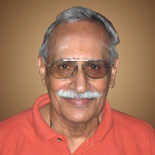|
Go to Part 21 VI - Consciousness is existence The self is not only consciousness but is also existence. For anything to exist, it has to be known to exist by some person or the other at some time or the other. Thus, everything is existent because it is evident. Otherwise, it cannot be stated to exist. So, existence presupposes knowability. Knowability presupposes awareness or consciousness since it is through consciousness that everything, whether it be an object in the external world, or our body or our internal mental state is known. Thus, while existence is knowability, knowability is consciousness. When we say, “Swamiji exists”, it also means that Swamiji-consciousness is. So, “is” in “Swamiji is”, denotes not only the existence with reference to Swamiji but also the consciousness with reference to Swamiji. Existence is called sat. Consciousness is called cit. What is cit has to be sat and what is sat has to be cit. So, sat will bring in cit and cit will bring in sat. Consciousness is existence and existence is consciousness.
To explain it in concrete terms, the existence of an object is known in the form of thought. The thought-form is called vRRitti. When the object-thought is illumined by consciousness in the mind, knowledge of the object-existence takes place. Existence (sat) is always existence-consciousness (sat-cit). Similarly, consciousness (cit) is always consciousness-existence (cit-sat). If there is no thought, the consciousness-existence is still there, as it is not dependent on the thought for its existence. Similarly, consciousness-existence without the body, consciousness-existence without the world, continues to be consciousness-existence.
Consciousness or the self is self-illuminating or svaprakäça. It is self-luminous in the sense that, while it reveals everything else, it itself is not revealed by anything [151]. It is self-evident. As evidence and existence go together, what is self-evident is self-existing. What is self-existent is called svataùsiddha or self-established. Thus, svaprakäça is svataùsiddha.
VII - The position of the body-mind-sense-complex with reference to consciousness We may now look into the position of the body-mind-sense-complex with reference to consciousness, which is the self. [152] The following example will help to clarify their relationship. Supposing some one points out his hand to us and then asks, “what is there?” our answer would be immediate: “the hand”. If we were asked: “What else is there in the hand?” we would look again and say: “Some lines are there in the hand and some wrinkles are there in the skin”. What we would miss to notice even if we were to look again is the light on the hand because of which we are able to see the hand. The presence of light is usually taken for granted by us since it is there with every object that we perceive and we do not feel any need to take note of it. Similarly, we do not recognise the consciousness aspect of the body-mind-sense-complex.
Now, if we look into the relationship between the hand and the light, we find that:
According to the çåuti [153], the relation between consciousness, which is the self, and the body-mind-sense-complex is similar to the connection between the light and the object that it illumines. So, it is possible to make similar conclusions about consciousness, and say that:
We will be discussing further aspects of this subject in the following chapters.
151. It is wrong to say that the self illumines itself since it cannot be simultaneously the illuminator and the illumined. Illumination is its nature (svarüpa) and is not action on its part. Go to Part 23
|
|||
|
|||


www.advaita.org.uk
Advaita for the 21st Century



Vedanta - Part 22
VEDĀNTA the solution to our fundamental problem
D. Venugopal

D. Venugopal is a student of Swami Paramarthananda and a direct disciple of Pujya Swami Dayananda. He has successfully completed the long-term residential course in Vedanta and Sanskrit conducted from May 2002 to July 2005 at the Arsha Vidya Gurukulam, Anaikatti.
Go to CONTENTS
Biography
Buy from Amazon UK
. Available from Bharatiya Vidya Bhavan centers at London, New York and Sydney.
. Also through the IBH Books & Magazines Distributors Pvt. Ltd. - contact contact@ibhworld.com. In case of difficulty,pvsankarankutty@bhavan.info can be contacted.
BOOK DETAILS
Publisher: Bharatiya Vidya Bhavan
ISBN: 978-81-7276-457-9
Format : Paperback
Pages: 324
List Price: US$7.00
Where to Buy
AUTHOR DETAILS

